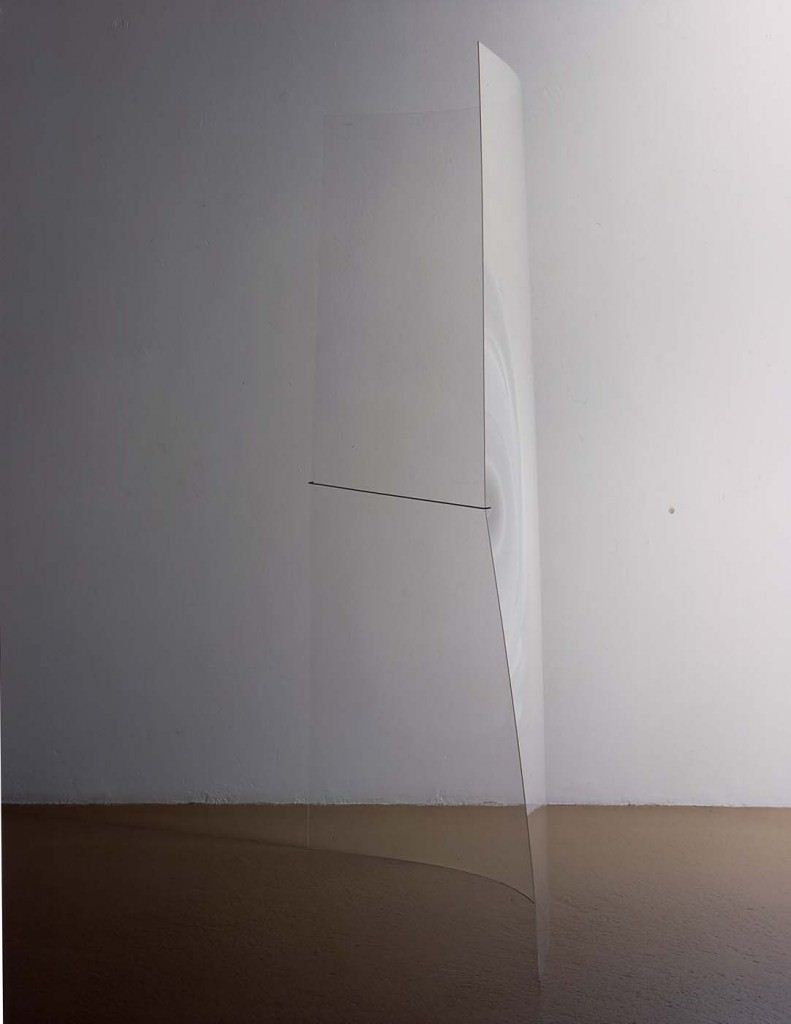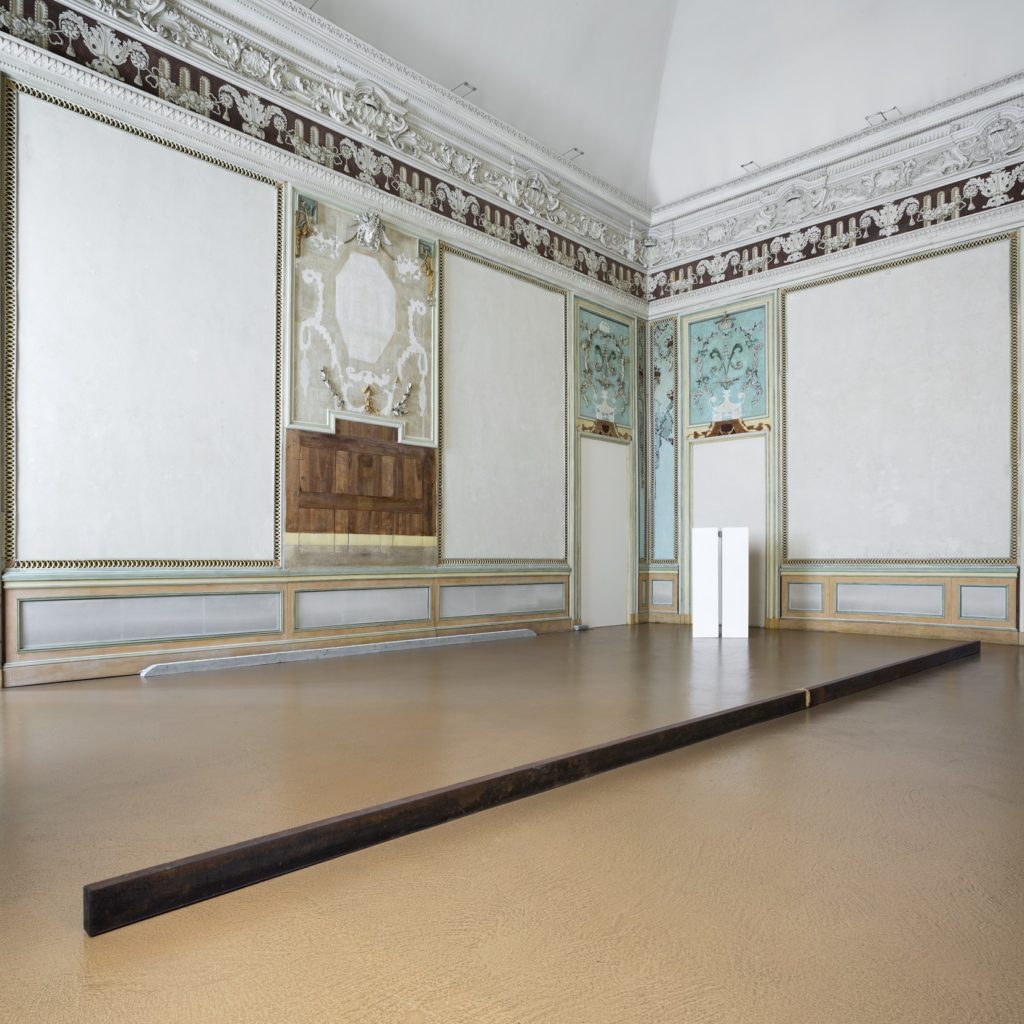Giovanni Anselmo
Giovanni Anselmo began his career as a founding member of Arte Povera, engaging in research that emphasizes the potential presence of the invisible within the visible, exposing the close relationship that exists between the finite and the infinite. Formulating a personal dialectic that often entails the juxtaposition of materials with opposing values, through his work, Anselmo attempts to reveal the innate energy of materials. Each work stems from the manifestation in space and time of the suppressed and emergent forces that the elements, arranged by the artist, produce as they encounter one another.
In Senza titolo (Untitled), 1967, a sheet of Plexiglas is slightly bent and held taut by a small, hooked iron rod. This work exemplifies Anselmo’s investigation and the use of simple means to create the conditions for initiating situations that contain tension. The work is the physical energy that it contains and that exists without the need for stable connections, in a situation of slight precariousness.
The temporal element is fundamental in Neon nel cemento (Neon in Cement), 1967–69, described by the artist as “a disquieting work,” in that it contains its own death. Four neon tubes, connected to an electrical circuit, are embedded within concrete blocks that rest on the floor. The long and rather thin blocks allow the viewer to glimpse only the ends of the neon tubes, which emanate a blue light. According to Anselmo, the work was created “with the intention of illuminating impenetrable darkness.” It exists as long as the neon tubes give off light and, in accordance with the artist’s instructions, can be refabricated when the tubes cease to function. Needing to be re-made, the work is limited in time, but its conditions nonetheless exist, for it exists beyond its possible disappearance.
Two iron beams separated by a sea sponge constitute Respiro (Breathing), 1969, a work that brings into proximity a natural, soft, elastic element and a heavy, compact, industrial product. The work is created by the energy that is liberated from the encounter between the two materials; variations in temperature produce minor alterations in the dimensions of the iron beams, which then modify the shape of the sponge.
Extending the premises of his works from the late 1960s, in the 1980s, Anselmo created a series made from blocks or slabs of granite, sometimes placed in relationship with the so-called oltremare (ultramarine, “beyond the sea”) and suspended or held in balance by steel cables and slipknots. Although the positioning of the stone slab in these works implies weightlessness, it is precisely through gravity that the piece finds its equilibrium, its bonds inexorably tightening. Among the works in this series is Verso oltremare (Toward the Ultramarine), 1984, which consists of a large, triangular-shaped stone slab, positioned almost vertically and held in balance by a steel cable, so that the upper vertex inclines toward, but does not quite touch, a small rectangle of ultramarine blue painted on the wall. The ultramarine of the title is the name of the tone of the color used in the pictorial intervention—a color whose name refers to the origins of the mineral, formerly imported into Europe from distant lands, from “beyond the sea,” and used to produce the pigment. Like a search for an undefined elsewhere, mentally beyond the museum walls, the work conveys a constant state of longing.
The idea of direction is an integral part of the artist’s investigations. Since the 1970s, Anselmo has used a magnetic compass needle as an expression of forces that indicate a possible movement. In Mentre la terra si orienta (While the Earth Finds Its Bearings), 1967–2007, the compass needle is inserted into a layer of dirt installed in the museum. The natural element inside the museum space exposes the reality of earth’s magnetic field, placing each viewer in direct confrontation with the overwhelming physical forces supporting the universe.
[MB]






